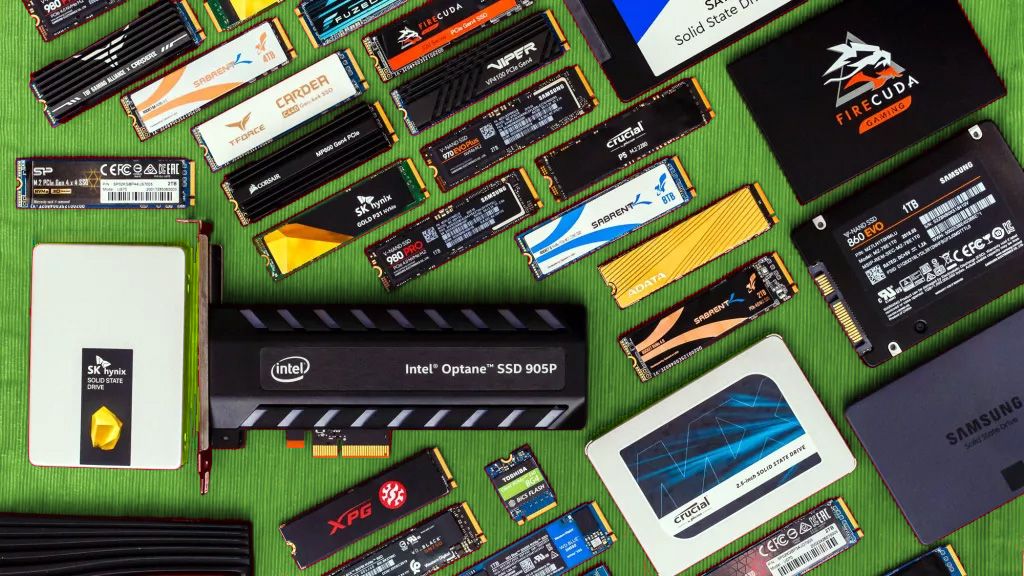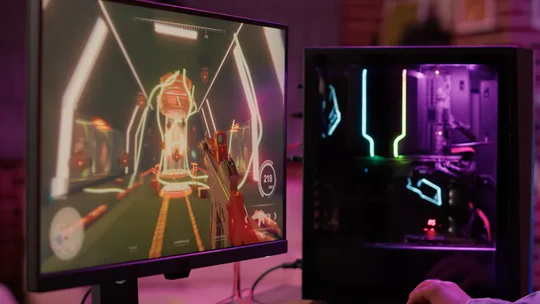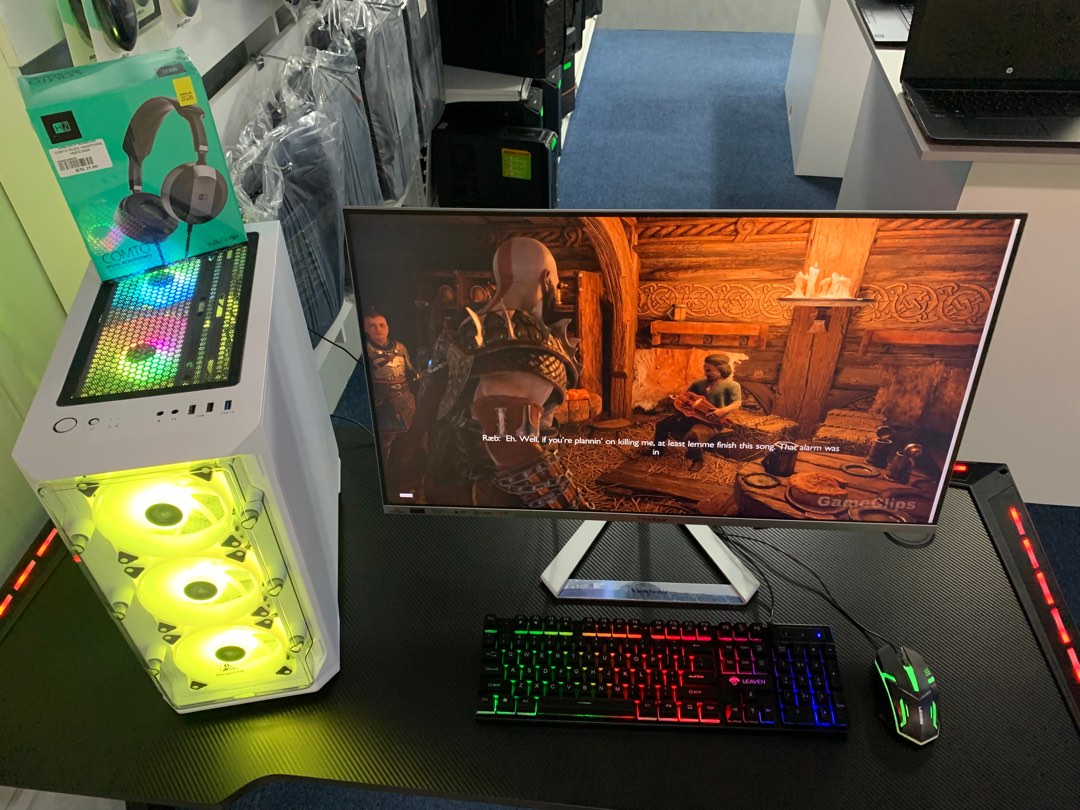
How to Choose an SSD for Gaming
admin
- 0
A common misstep among PC Gamers is overspending on SSDs, wasting money better spent in crucial components like graphics cards. Or buying bad storage like slow HDDs. Today, we’re setting the record straight by identifying the best SSDs for gaming in 2025.
Understanding the right balance between cost, performance, and capacity is key, and I’m here to walk you through what you need to know. we’ll recommend specific products tailored to various budgets.

Whether you’re in the market for lightning-fast load times for competitive play or a dependable SSD that’s easy on your wallet, there’s a perfect match for you. The goal is to find SSDs that delivers the performance you need for gaming without overspending, allowing you to invest more funds into a powerful GPU that will significantly enhance your gameplay. Let’s explore your options and secure the ideal SSD for your Gaming PC this year.
Does SSD really matter for gaming?
Talking about SSD Gaming Performance, particularly for the best SSD for gaming in 2023, the conversation often revolves around the advantages newer technologies like Microsoft offer. This API allows games to load assets directly from the SSD to the GPU, bypassing the CPU and potentially reducing bottlenecks. The expectation has been higher FPS and shorter loading times.
With the release of “Forspoken” in January 2023, the first PC game to utilize DirectStorage, benchmarks by revealed a interesting outcome.
They found virtually no FPS difference between SATA SSDs, PCIe Gen 3 SSDs, and PCIe Gen 4 SSDs, even when using a top-tier RTX 4090. The fastest drives were only about 4 FPS faster, roughly a 5% improvement over a traditional hard disk drive.
As for game loading times, one might expect significant improvements with higher-spec SSDs. However, tests from multiple outlets showed that any SSD, even older SATA ones, had loading times within a couple of seconds of each other – a difference virtually imperceptible to humans. They were significantly better than HDDs but surprisingly close to each other regardless of the SSD technology.
This data comes from just one DirectStorage title, and future releases may leverage the technology more effectively.
In a Blind by Linus Tech Tips, the performance between SATA SSD, NVMe SSD and PCI-E Gen4 SSD was so closely matched that participants sometimes felt the SATA SSD PC seemed faster than one with a PCIe 4.0 NVMe SSD, highlighting how subtle these differences currently are in practical terms.
Understanding SSD Basics
PC storage comes in three main types: traditional spinning hard drives (HDDs) that connect via a SATA data cable, SATA SSDs that often come in a 2.5-inch form factor with a cable (but are also available in an M.2 form factor), and M.2 NVMe SSDs, which use the much faster NVMe (Non-Volatile Memory Express) protocol and exclusively come in the M.2 form factor.
In the past couple of years, NVMe SSD prices have plummeted, making HDDs obsolete for new personal PC builds, even for bulk storage. NVMe SSDs offer superior speed and is cheaper than SATA. However, if you’re working with an older PC or you’ve maxed out the M.2 slots on your motherboard, SATA SSDs might still be a reasonable choice.
Source: Prime Tech Support
Durability and endurance are critical considerations for SSD storage, particularly as performance demands increase. Historically, durability wasn’t a major concern for traditional hard drives or early SATA SSDs because most users didn’t push these drives to their limits. However, with the advent of M.2 NVMe SSDs, the question of longevity has become more pressing.
Unlike larger SATA SSDs with integrated heat-dissipating cases, M.2 NVMe SSDs are smaller and don’t always come with built-in heatsinks, which means they often operate at higher temperatures due to increased electricity passing through them. Over time, the heat can degrade the NAND, controller, and memory, affecting the lifespan and performance of the drive.
Manufacturers often highlight two key metrics: TBW (Terabytes Written) and DWPD (Drive Writes Per Day). These figures are a sort of promise from the manufacturer that the SSD will maintain its performance over the warranty period, typically five years.
TBW indicates the total amount of data that can be written to the drive over its lifetime without performance degradation, while DWPD represents the fraction of the drive’s capacity that can be written to every day over the warranty period.
It’s essential to stay within these usage guidelines because manufacturers track the drive’s activity. If a drive fails within the warranty period, they will check whether it’s been used excessively. If you’ve exceeded the TBW or DWPD limits, this could void the warranty.
When considering capacity and over-provisioning, it’s notable that SSDs might not always offer their full advertised storage due to over-provisioning, which reserves a portion of the storage as a buffer to enhance performance and data handling.
This feature is particularly prevalent in SSDs designed for enterprise environments. For example, a drive advertised as 500GB may actually provide 480GB, with the remaining space allocated for over-provisioning. While this can improve the drive’s performance and endurance, it’s something to be aware of when comparing storage options.
Finally, the quality of NAND impacts performance. NAND chips come in various types, including SLC, MLC, TLC, and QLC, with SLC offering the best performance and endurance but at a lower capacity and a higher price.
Conversely, QLC packs more data into the drive at a lower cost but with reduced performance and durability. TLC NAND strikes a balance between capacity, performance, and price, making it the preferred choice for most users. Advances like 3D NAND have further enhanced this balance by adding vertical storage layers, offering more data storage without compromising performance.

